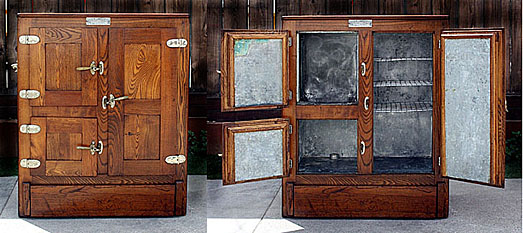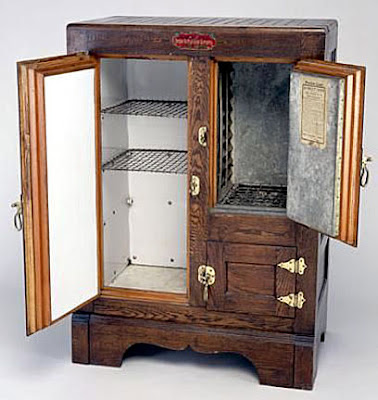QUESTION: I’ve been collecting antiques and collectibles for the past 30 years. Now that I’m getting older, I’m looking to sell off some of my items but I have little information on items in my collections. What is the best way to document my collections?
 ANSWER: Failing to document their collections is more common than you may think. Many people enjoy the fun of collecting antiques and collectibles but don’t take the time to manage their collections. And many seniors, seeking to downsize, all of a sudden want to sell some of their items. They often try in vain to get valuations for their items online. But without previously documenting their collections, this can be a challenge.
ANSWER: Failing to document their collections is more common than you may think. Many people enjoy the fun of collecting antiques and collectibles but don’t take the time to manage their collections. And many seniors, seeking to downsize, all of a sudden want to sell some of their items. They often try in vain to get valuations for their items online. But without previously documenting their collections, this can be a challenge.
Those who are just starting collections should record a description and history of each item, as well as the date purchased and the price paid. Those managing their collections years after purchase may have a harder time of gathering information, but with today’s technology, it’s easier than ever. One thing they may not have is the date of purchase and price paid—two very important facts when determining current value.
Collecting is a personal thing and most people do it for sheer enjoyment. They choose some objects carefully to build or enhance their collections, acquire others to use everyday, and inherit still others. While collectors treasure each item in their collections, many don’t understand the appeal or the value of it.
 Over the last couple of decades, the value of some antiques has fallen while that of some collectibles has risen. What many collectors lack is a comprehensive record, with supporting documents, of objects they own. As antiques increase in value, it’s important to know their provenance. While most people don’t think of their prized objects as part of their tangible financial assets, the IRS, insurance companies, banks, and courts do.
Over the last couple of decades, the value of some antiques has fallen while that of some collectibles has risen. What many collectors lack is a comprehensive record, with supporting documents, of objects they own. As antiques increase in value, it’s important to know their provenance. While most people don’t think of their prized objects as part of their tangible financial assets, the IRS, insurance companies, banks, and courts do.
"To document" means to create a record that thoroughly describes an object and which also contains related documents about it, and keep together this record and supporting information on each object.
 A collector may already have some types of documents or can easily acquire them, such as a bill of sale, a note accompanying a gift, a snapshot, a printed description, a program from an exhibit, biographical information on the artist or maker, a description and picture of a similar object perhaps from a newspaper, magazine, or the Internet, a copy of a mark on the object, and others.
A collector may already have some types of documents or can easily acquire them, such as a bill of sale, a note accompanying a gift, a snapshot, a printed description, a program from an exhibit, biographical information on the artist or maker, a description and picture of a similar object perhaps from a newspaper, magazine, or the Internet, a copy of a mark on the object, and others.
The objects in specialized collections— furniture, dolls, quilts, kitchen utensils, guns, tools, even sports and music memorabilia—are prime candidates for documentation. Museums document each object in their collections. So it’s only natural that collectors do the same for insurance purposes, family heritage, preparing for appraisal, tax benefits, and connoisseurship.
At the very least, a collector should know what he or she paid for each object in their collections. Some insurance companies require that jewelry and fine art be placed on a special schedule. Often they also require an appraisal for the most valuable pieces.
In case of theft, loss or damage by fire, flood or national disasters, a collector needs to prove ownership of any object claimed and provide descriptions with supporting information in order to be compensated or to help the police identify and recover the stolen valuables. If a collector cannot do this, there’s a risk of losing compensation in addition to being permanently separated from the treasured object. The more adequate the proof is, the greater the chances that will be satisfying. It’s more difficult to document after a loss occurs, and perhaps it cannot be done at all.
 Every home has objects of value—whether monetary, sentimental or family-related. Documenting can help people decide which objects they wish to give to certain heirs. Recording the provenance and capturing the family history associated with a particular object provides a more complete picture for both the collector and the heirs.
Every home has objects of value—whether monetary, sentimental or family-related. Documenting can help people decide which objects they wish to give to certain heirs. Recording the provenance and capturing the family history associated with a particular object provides a more complete picture for both the collector and the heirs.
If certain pieces have been handed down through the family, they may have family stories associated with them. It’s important not to depend on those stories being passed down verbally. They should be written down. Additionally, heirs often carelessly sell off family pieces or give them away because succeeding generations are unaware of their actual or sentimental value. This is often done in the haste to clear a house after a loved one’s death. Documenting can assure that certain pieces remain in the family, or at least that someone will make an educated decision before selling or giving away a special object.
 Insurance companies usually require that a collector or an heir provide them with a professional appraisal. However, not every object in your household needs to be appraised. Documenting can help decide which objects need to be appraised, plus it can also provide the appraiser with valuable information, thus saving time and reducing the cost of the appraisal. The appraisal then becomes part of the object’s documentation.
Insurance companies usually require that a collector or an heir provide them with a professional appraisal. However, not every object in your household needs to be appraised. Documenting can help decide which objects need to be appraised, plus it can also provide the appraiser with valuable information, thus saving time and reducing the cost of the appraisal. The appraisal then becomes part of the object’s documentation.
And If an object is sold or given to a museum or other institution, its documentation can provide detailed information from acquisition to sale or gift, providing a factual basis for tax benefits. Museums look upon documentation as a benefit, as it provides valuable family and cultural history about an object for its visitors.
If not documentation exists, it’s important to begin with a simple search for it on the Internet. While it’s possible to get results using a simple keyword search, that may not reveal anything. An alternative would be to conduct an image search. Using the same keyword(s), click on the Images tab in the search page. This will result in photos of objects related to search words. Clicking on one or more that look like or similar to the object being researched will bring up the Web site associated with it.
Patience is required when searching. It may take several different keywords to obtain any useful information.
To get an idea about value, it’s possible to search for online antique auction sites and there search for an object using the same keyword(s). By searching several auctions for the sold prices, then averaging them, it’s possible to get an approximate current value for the object.

















































